Abstract
The respiration and cytochrome properties of “glucose-bleached” Chlorella protothecoides Krüger, Indiana strain 25, were studied. This organism, when grown heterotrophically with high glucose and a low organic nitrogen source, has no chlorophyll, little carotenoid, and diminished chloroplast structure—factors which make it suitable for respiration studies.
Whole cell endogenous oxygen uptake rates are either stimulated or only slightly inhibited by cyanide, azide, CO, and antimycin. When these inhibitors are used with m-chlorobenz-hydroxamic acid (mCLAM), an inhibitor of higher plant mitochondrial alternate oxidase, O2 uptake is inhibited. There is little effect of mCLAM by itself on the rate of oxygen uptake. The inhibition by CO of O2 uptake in the presence of mCLAM is reversed by light.
The cytochrome chain of C. protothecoides consists of cytochromes aa3, b, and c, as revealed by room temperature difference spectra. In common with mitochondria of higher plants, there is a further reduction of cytochrome b with dithionite. In the presence of antimycin, the cytochromes aa3 and c are oxidized and cytochrome b is reduced. Cyanide causes a partial reduction of cytochromes aa3 and c while cytochrome b remains oxidized. This general response is characteristic of higher plant mitochrondria having large amounts of cyanide-resistant respiration. Carbon monoxide spectra reveal one CO-combining pigment. The cytochrome b region differs from that of higher plants in that the typical complex spectrum does not appear at low temperature (−190 C).
The concentration of cytochrome aa3 per cell volume was observed during the greening of “glucose-bleached” cells. The concentration of these cytochromes nearly tripled during the 24 hours of the initial stages of greening.
Full text
PDF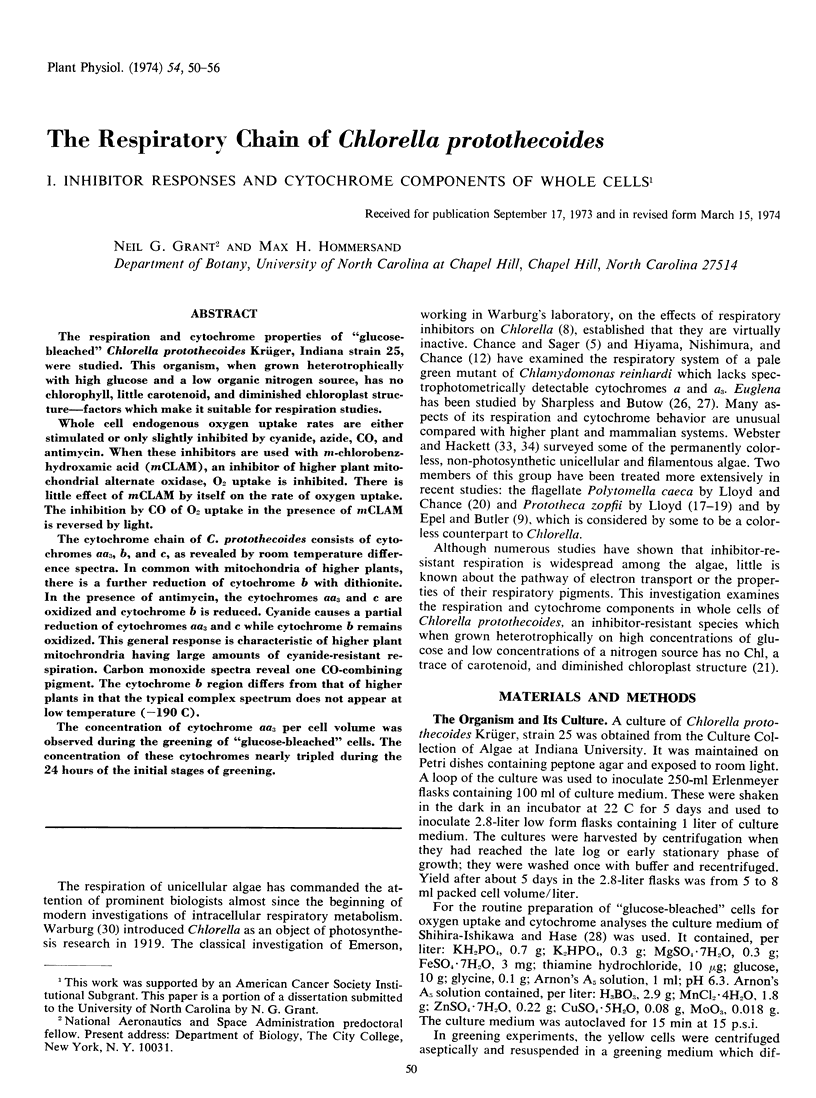
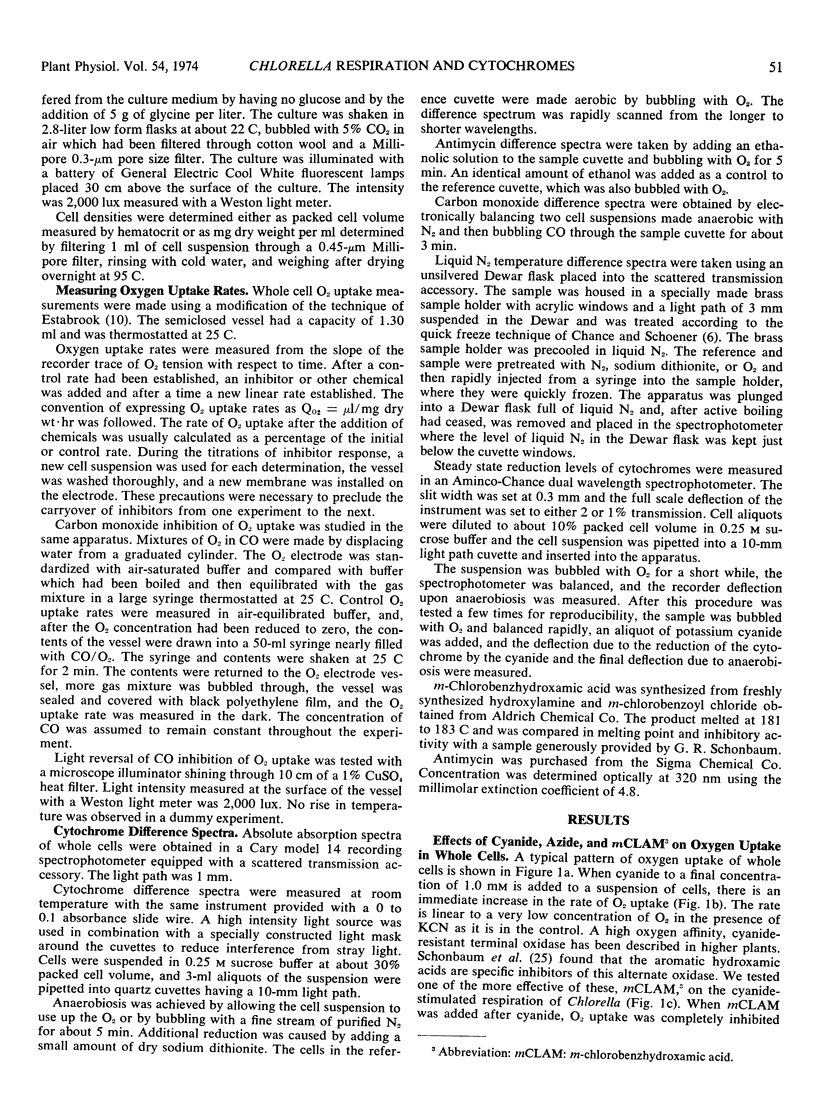
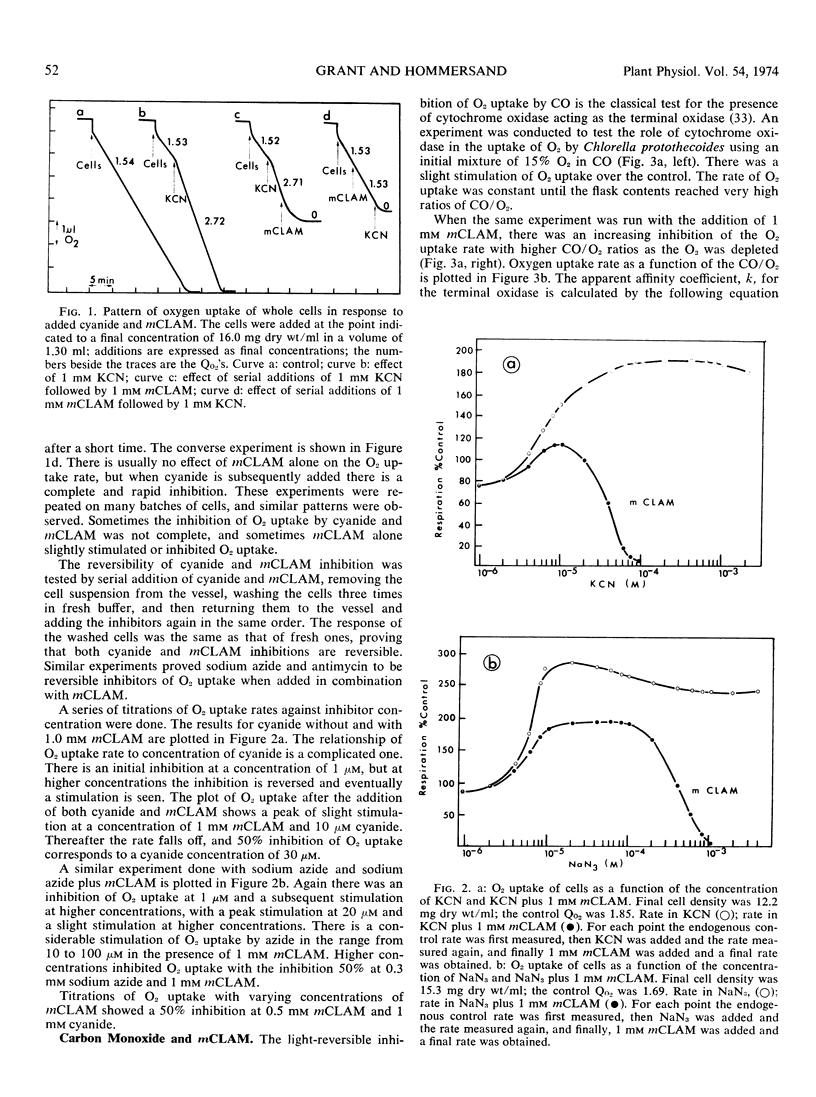
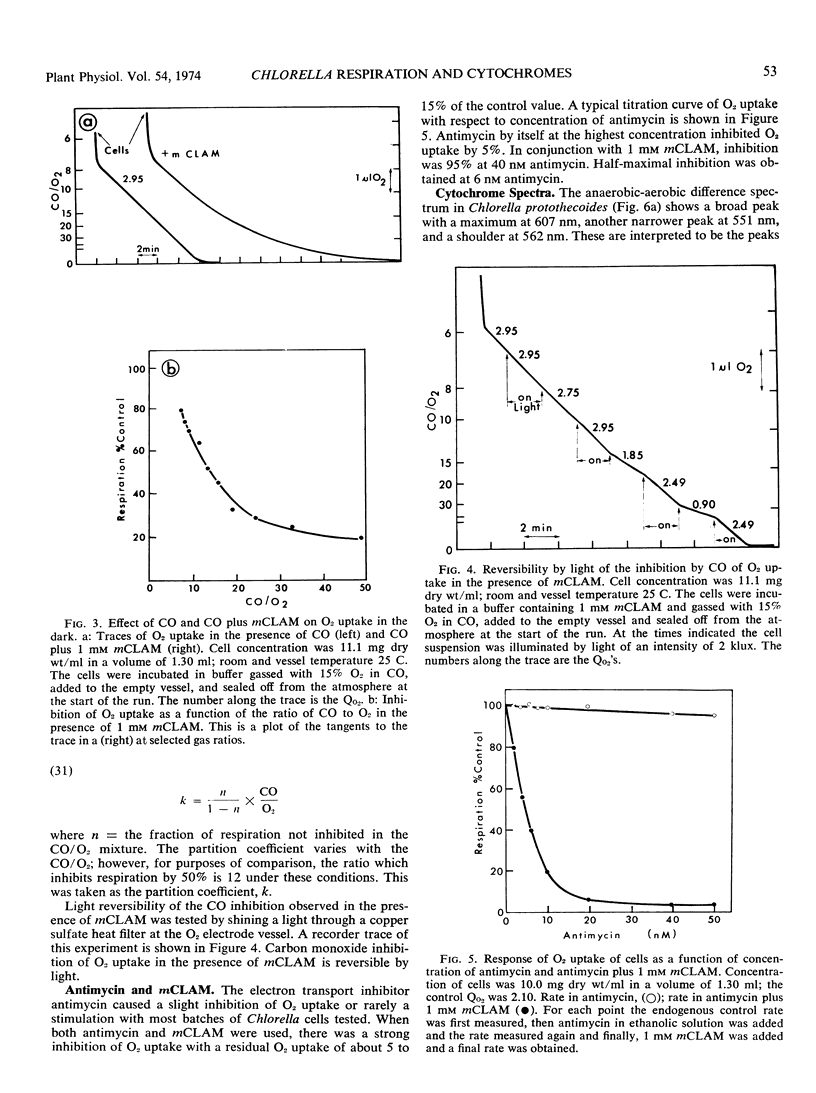

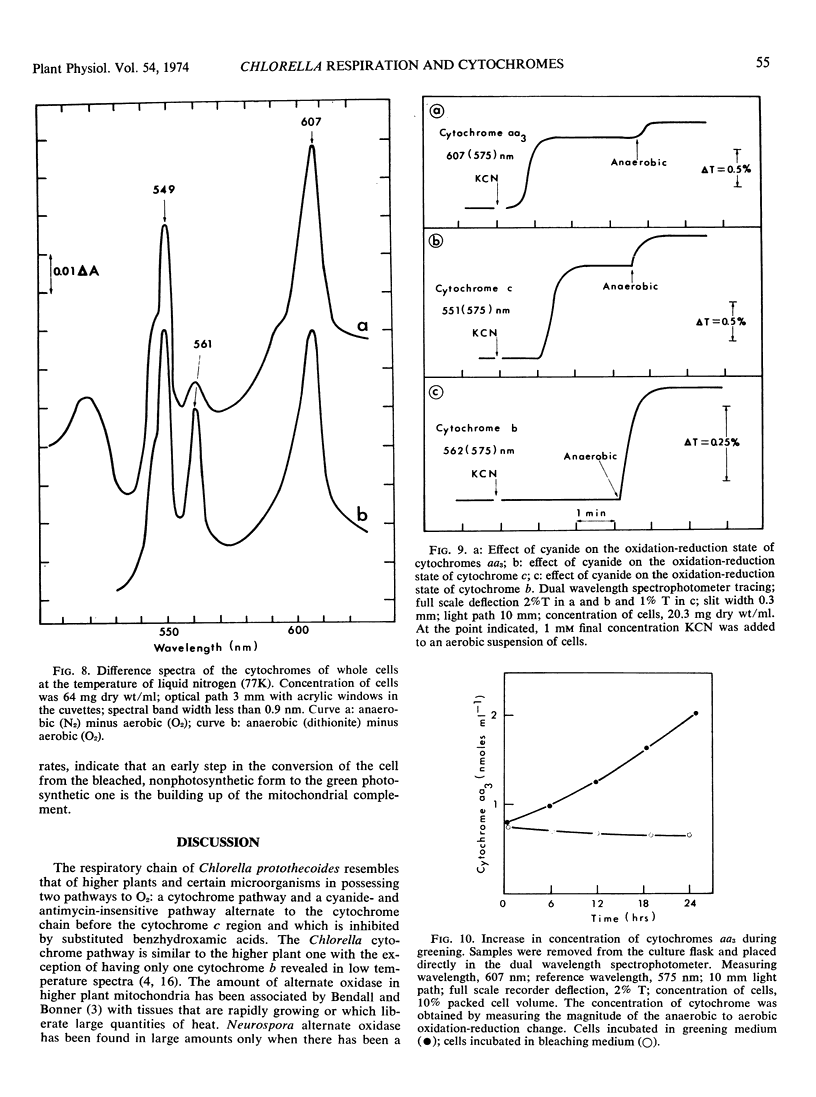
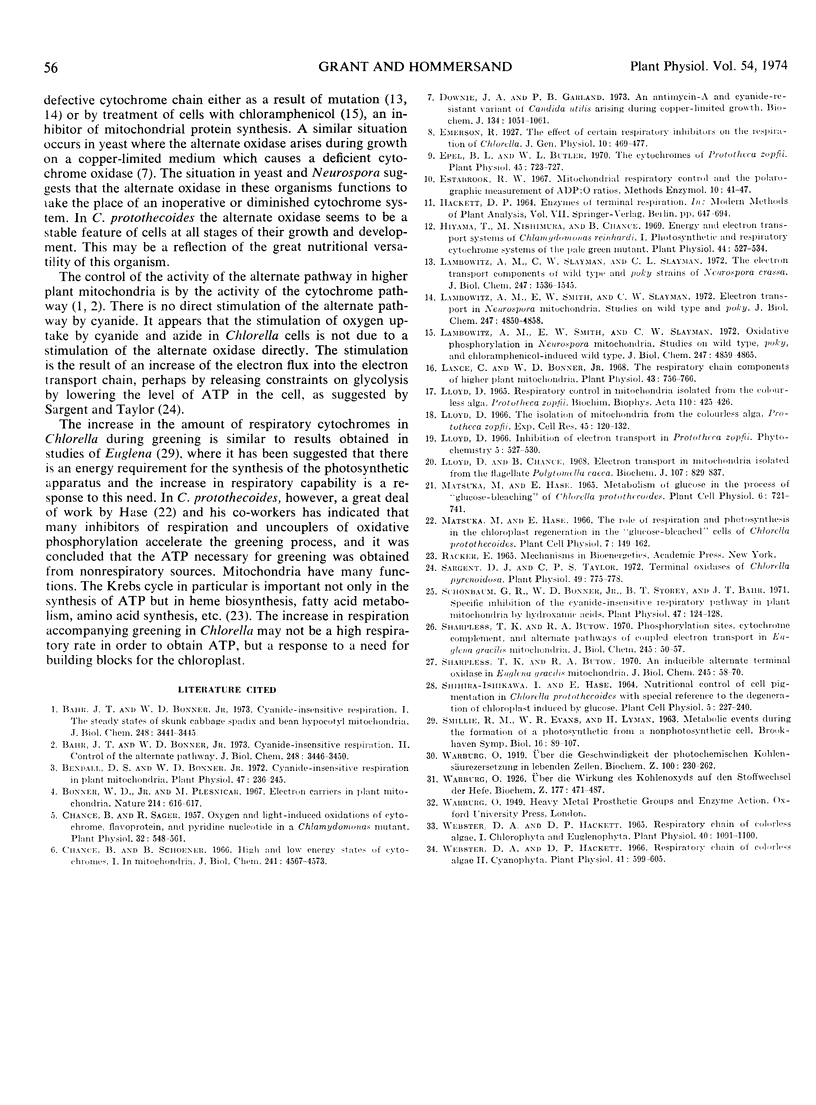
Selected References
These references are in PubMed. This may not be the complete list of references from this article.
- Bahr J. T., Bonner W. D., Jr Cyanide-insensitive respiration. I. The steady states of skunk cabbage spadix and bean hypocotyl mitochondria. J Biol Chem. 1973 May 25;248(10):3441–3445. [PubMed] [Google Scholar]
- Bahr J. T., Bonner W. D., Jr Cyanide-insensitive respiration. II. Control of the alternate pathway. J Biol Chem. 1973 May 25;248(10):3446–3450. [PubMed] [Google Scholar]
- Chance B., Sager R. Oxygen and Light Induced Oxidations of Cytochrome, Flavoprotein, and Pyridine Nucleotide in a Chlamydomonas Mutant. Plant Physiol. 1957 Nov;32(6):548–561. doi: 10.1104/pp.32.6.548. [DOI] [PMC free article] [PubMed] [Google Scholar]
- Epel B. L., Butler W. L. The Cytochromes of Prototheca zopfii. Plant Physiol. 1970 Jun;45(6):723–727. doi: 10.1104/pp.45.6.723. [DOI] [PMC free article] [PubMed] [Google Scholar]
- Lance C., Bonner W. D. The respiratory chain components of higher plant mitochondria. Plant Physiol. 1968 May;43(5):756–766. doi: 10.1104/pp.43.5.756. [DOI] [PMC free article] [PubMed] [Google Scholar]
- Lasnitzki I., Dingle J. T., Adams S. The effect of steroid hormones on lysosomal activity of rat ventral prostate gland in culture. Exp Cell Res. 1966 Aug;43(1):120–130. doi: 10.1016/0014-4827(66)90385-5. [DOI] [PubMed] [Google Scholar]
- Lloyd D., Chance B. Electron transport in mitochondria isolated from the flagellate Polytomella caeca. Biochem J. 1968 May;107(6):829–837. doi: 10.1042/bj1070829. [DOI] [PMC free article] [PubMed] [Google Scholar]
- Lloyd D. Respiratory control in mitochondria isolated from the colourless alga Prototheca zopfii. Biochim Biophys Acta. 1965 Nov 22;110(2):425–426. doi: 10.1016/s0926-6593(65)80050-9. [DOI] [PubMed] [Google Scholar]
- Sargent D. F., Taylor C. P. Terminal Oxidases of Chlorella pyrenoidosa. Plant Physiol. 1972 May;49(5):775–778. doi: 10.1104/pp.49.5.775. [DOI] [PMC free article] [PubMed] [Google Scholar]


